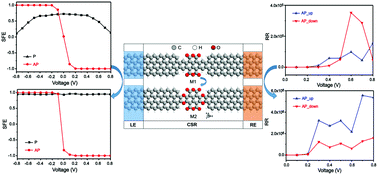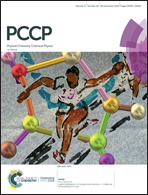Spin transport properties of 1,4,5,8-naphthalenetetracarboxylic dianhydride based molecular devices
Abstract
Using density functional theory combined with the nonequilibrium Green's function method, spin-dependent transport properties of molecular devices consisting of the 1,4,5,8-naphthalenetetracarboxylic dianhydride (NTCDA) molecule anchored via C and O linkages to zigzag graphene nanoribbon (ZGNR) electrodes were systematically investigated. Calculation results showed that the two connection modes display a good spin transport performance in both parallel (P) and anti-parallel (AP) configurations. Particularly, oxygen connection significantly improves the spin filtration effect. These observations were validated by analyzing spin-resolved transmission spectra, band structures and spatial distribution of molecular orbitals within the bias window. Further comparison of the results of different models indicated that the linkage plays a crucial role in improving the spin transport properties for the proposed NTCDA–ZGNR system, giving them potential applications in high-performance multifunctional spintronic devices.



 Please wait while we load your content...
Please wait while we load your content...